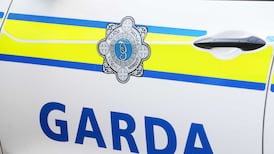Dublin’s north inner city is a place of extremes. On Wednesday night, travelling from East Wall Road on to North Wall Quay, one passes gleaming office blocks, the National Convention Centre, the Central Bank. The streets are deserted apart from several people jogging, a few cars, and, a couple of food-delivery cyclists.
A right turn down North Wapping Street towards Mayor Street finds several construction sites. Five cranes over one site indicate ongoing ambition for the area. Emblazoned across a hoarding around one is a statement: “Only the exceptional endures”.
Towards Sheriff Street and Seville Place, the streetscape changes. Housing stock is older, poorer; most of the Georgian houses are split into flats. Wheelie bins are overflowing
Turning right again, now towards Sheriff Street and Seville Place, the streetscape changes. Housing stock is older, poorer; most of the Georgian houses are split into flats. Wheelie bins are overflowing. A good-humoured group of teenage girls, dressed in leggings and puffer-jackets, walk together towards Amiens Street while the occasional young man is visible, some carrying groceries or a few cans of beer.
Off another nearby street, at about 8.30pm, a commotion starts. A young man runs from a house carrying a long metal bar and hurls it back towards the side street shouting: “I’ll get every one of yous.” As people in two neighbouring houses look out from their doors, a woman in another leaves her doorstep, picks up a dog and runs back to her home.
People in the house the man has run from scream after him: “Get off. Get off,” to which he replies: “I’ll blow the f**king legs off you. You watch” before running towards Summerhill.
Watching, a man who does not want to be named tells The Irish Times: “This is f**king terrible. This goes on all the time, every day.”
Asked what has just happened, he says: “They are doing drug deals, it’s a scoring row.” The immediate area has been a “drugs supermarket” for several years, he says. Two houses are involved “and everyone knows it – the guards know it, the council knows it”.
Describing constant traffic to the street, he says a van from a well-known company arrives “every day to buy drugs, [and] taxis are pulling in non-stop.
“There’s women turning up here at three and four in the morning with buggies. There was one there this morning with a baby with no socks on, freezing cold. And then when she bought the drugs someone came back down after her and took them back, mugged her. She was bawling and screaming.”
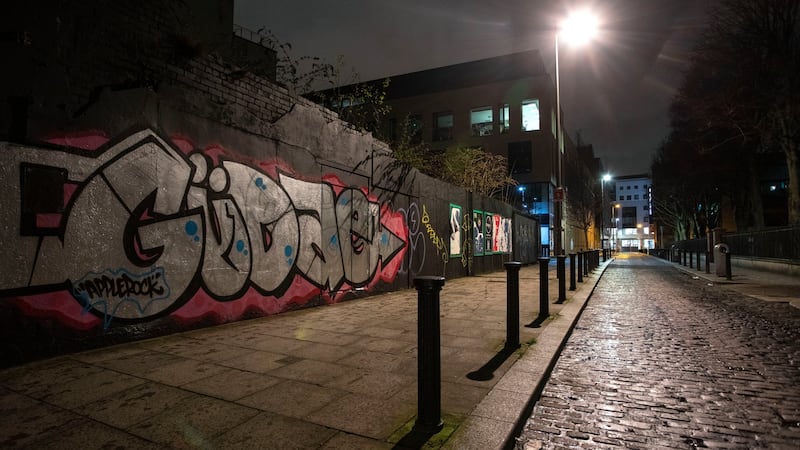
As we speak three individuals turn into the street, two on electric scooters and one on a bike, and go towards the house in question. Asked if he is frightened living here the man says: “No, not really. They wouldn’t come near us but it’s horrible for anyone here who has kids.”
Nearby, students Thanos Vasilaiou (28) from Greece and Branav Urohit (24) from India are leaving their student accommodation. In Dublin since September, they “see drug deals every day” in the area “sometimes four or five times a day”.
“No, we did not expect this in Dublin at all. It is meant to be the second best country in the world according to the UN. It doesn’t feel like it,” says Vasilaiou. “We see some violence, random fights, not with knives but with fists.”
THE ENCOUNTER WE WITNESS comes less than a week after more than 140 local residents attended a crisis meeting about an upsurge in violent crime. Held online, it came following two fatal knife attacks in the area in recent weeks and in response to growing "fear, anxiety and deep sadness at what is happening", says Noel Wardick, chief executive of the Dublin City Community Co-operative.
What is happening? Residents, community activists and youth workers all agree that a sense of increased drug-related violence, threat and intimidation in recent months has brought heightened fear to the area.
A report published last month, Debts, Threats, Distress and Hope: Towards Understanding Drug-Related Intimidation in Dublin’s North East Inner City, said almost a quarter of people here had experienced drug-related intimidation. More than 80 per cent saw it as an issue but less than one in five would report it.
The report said open dealing and low-level intimidation were normal, making the area feel unsafe and causing people to change their routines, avoid areas, stop letting children play outdoors, and to withdraw and cut off contacts with others in their community.
Of the 23 per cent who said they had experienced drug-related intimidation, 67 per cent had been threatened with physical harm; 53 per cent had been followed or tracked; 45 per cent had been threatened with vandalism of their property – including with pipe bombs – and 12 per cent threatened with sexual violence.
The fieldwork for the report, published by the Drug-Related Intimidation Initiative operated by the Ana Liffey Drug Project, was conducted in July and August last year.
The closure of schools and youth services has meant young people are hanging around, bored and 'easy prey' to older actors in the drug trade
Since then, says Sarah Kelleher, chief executive of Lourdes Community Youth Services, “things are absolutely worse . . . The drugs, the intimidation, are not new. That’s just been allowed to fester, but the stealing bikes, scooters, the knives – and with them the intensity of the intimidation – have definitely increased.”
Paddy Murdiff (70) a community activist and convener on the North Inner City Community Coalition, has lived in Summerhill Parade for 16 years.
“Until recently I would walk anywhere. Now, it’s just trepidation when you go out. I wouldn’t go out now at night. Older people are feeling isolated and lonely. Last year there was a better community feel and it has changed so quick.”
Like others, he believes the pandemic has played a part, exacerbating the sense of isolation and vulnerability people feel, while the closure of schools and youth services has meant young people are hanging around, bored and “easy prey” to older actors in the drug trade.
“And I think new kids, from other areas, are coming into the north inner city to hang around. I don’t know half the young fellas I see outside my door these days. I used to know them all.”
Echoing him, youth worker Jonathan Dowling (35) says the area has become a “one-stop shop or hub” for anything you need (“drugs, guns, tablets, alcohol”), and is attracting people from across the city.
Garda figures confirm residents’ concerns, showing increases in aggravated burglaries involving violence or threats of violence, knife seizures and robberies in the area last year.
Figures published last month show while aggravated burglaries rose 26 per cent across the Dublin Metropolitan Region (DMR) last year, from a total of 107 incidents in 2019 to 135, the increase in central Dublin was 100 per cent, and in north central almost 260 per cent, from just 17 incidents in 2019 to 44 last year.
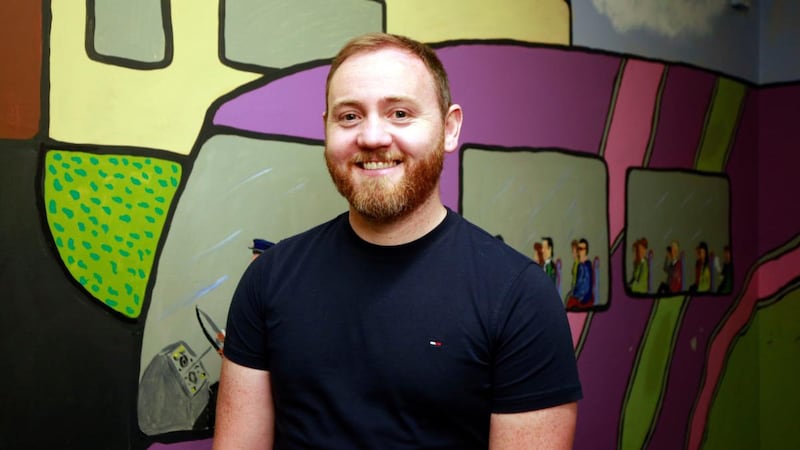
Assistant Garda Commissioner Anne Marie Cagney told a Dublin City Council policing committee "drugs-related intimidation" was a significant factor in a substantial number of the burglaries in this area.
Knife seizures were also up last year. Nationally, the highest numbers of seizures were in Dublin south central followed by Dublin north central. One in six knives was seized from children aged 12 to 17 years.
At the same time DMR north central experienced a decline in community policing last year, with personnel down 11 per cent – from 301 in 2019 to 274 – while other areas like DMR south central and DMR west saw their community policing personnel increase by 17 per cent and 16 per cent respectively.
DOWLING, WHO IS speaking to The Irish Times in a personal capacity, grew up on Summerhill and lives still in the area. He describes himself as "very lucky", having been "one of the young people hanging around corners and getting involved in anti-social behaviour".
“I had a mam and dad at home. My mam was working in cleaning and my dad in construction, and so I had that stability, which a lot of my friends didn’t.
“I grew up with 10 close friends. Apart from myself, two of them only are still alive now. One of them is studying law. The other is in prison.” Of the other seven, he says, “there were suicides, one died in police custody, there were overdoses and one lad sadly drowned.
“When you grow up with that amount of tragedy you can become desensitised to that, think it’s the norm. It’s only when you go off and get an education you realise there’s something very wrong in that.”
Dowling enjoyed “hanging around corners”, he says, from about aged 10. “It was the norm, and there was a great sense of community. Parents would stop and chat with you, but when I started getting to 13, 14 there were two roads – drugs and prison, or get a trade. The lure of the drugs trade was very hard to resist for a lot of people my age.”
It appeared to be “easy cash” in a context where most people had “none” and, he says, most had no fear they would ever be caught or face repercussions.
It was like a social system, and I was part of it. I could have easily ended up like one of the other seven if I'd experimented with drugs, ended up in prison
Though Dowling did not sell drugs or steal, he says he was vulnerable “by association” given his peer group. “It was like a social system, and I was part of it. I could have easily ended up like one of the other seven if I’d experimented with drugs, ended up in prison. Even just a couple of convictions would have prevented me from travelling, hampered me going to university, getting into youth work.”
He left school at 16 and was probably at this point hugely vulnerable. It was when one of his friends did come to the attention of gardaí that a juvenile liaison officer visited his mother to discuss his “association” with him.
"She thought it would be a good idea for me to go to the Nickol (North Inner City Keeps On Learning) project as a kind of preventative measure." The project, which runs out of the Belvedere Youth Club in Buckingham Street, works with the Garda youth diversion programme.
“I loved it there, was there until I was 18. I did a post-Leaving Certificate course in youth work, volunteered at Nickol, then I went to NUI Maynooth.” Dowling travelled, working in Australia in homeless services and is now a youth team leader in the same club that marked “a key turning point” in his life.
He refers repeatedly to how “lucky” he was to have “stability” at home, adding he was “probably a very positive influence” on some of his peers. “Some would have come from homes where there was addiction and other traumas.”
There were two, albeit modest, incomes coming into the home while many of his friends experienced what he describes as “economic and social poverty”. This lack of economic resources, compounded by a lack of social capital, has only got worse for some children and young people, Dowling believes.
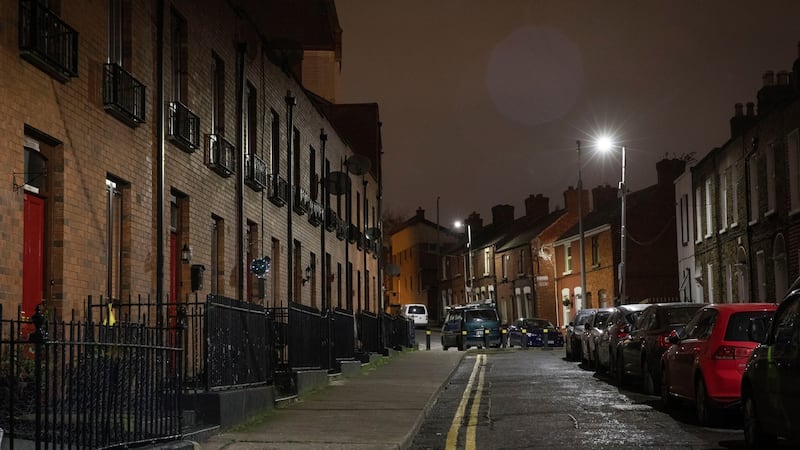
By social capital he means the social networks, educational experiences and self-esteem that support, and imbue resilience in, children and young people.
“Drugs, knife crime – they are symptoms of much deeper issues. Yes, there is some really, really good positive work going on. There’s the community policing dialogue exploring the relationships between gardaí and young people. There’s youth clubs, work placements.
“There are opportunities but we need deeper measures than just opportunities. We need to build the capacity of the young people and the community to take those opportunities. You won’t get changes overnight.”
To veteran activists and jaded observers of the north inner city, recent heightened concern about drugs, anti-social behaviour and crime feel depressingly familiar.
"IT DOES FEEL a bit like Groundhog Day," says Anna Quigley, co-ordinator of CityWide Drugs Crisis Campaign. "It will be 25 years ago this year since Veronica Guerin was murdered. Then, we got a huge focus on the heroin crisis, we got the Criminal Assets Bureau and a ministerial task force on drugs."
In his November 1996 report, then chair of that task force Pat Rabbitte wrote: "There is a high correlation between the areas where the problem [of drug abuse] is most acute and the areas which have been designated on the basis of objective criteria as economically and socially disadvantaged."
Rabbitte noted: “The statutory and voluntary agencies in their submissions were unanimously of the view that drug misuse is closely associated with social and economic disadvantage, characterised by unemployment, poor living conditions, educational attainment, high levels of family breakdown and a lack of recreational facilities and other supports.”
“It was supposed to be a whole new beginning,” recalls Quigley.
The first drugs task forces were established, their aim to bring local stakeholders, including gardaí, community workers, the HSE and schools together to devise focused strategies tackling the drugs crisis.
Communities engaged fully and for several years they worked well but gradually, says Quigley, over many years, the partnership approach broke down as agencies and departments went “back to their preferred way of working, which is not to have flexibility, not to listen to people on the ground”.
In the meantime, the social and economic disadvantage persisted.
Taoiseach Micheál Martin and senior Ministers have met community conveners, who said there was a real danger the State could lose control of this part of the capital unless the drug crime was stopped
The most recent poverty data, mapped by the independent agency Pobal using 2016 census data, classify the areas bordered by Sean McDermott Street and Summerhill Parade as “very disadvantaged”. In one small area the male unemployment rate is 43 per cent, 37 per cent of the adult population has a primary education only, and just 2.6 per cent has a third-level education.
Last month’s Drug-Related Intimidation Initiative report says the drugs trade has become “entrenched in the economic survival of the community”. It provides “jobs”, said one focus group participant, and incomes to young people who see few opportunities elsewhere.
In response to a series of gangland murders five years ago came another task force chaired by Kieran Mulvey. His 2017 report, titled the Social and Economic Regeneration of Dublin's North East Inner City, notes: "Over a third of the small areas can be described as disadvantaged or very disadvantaged."
Of its 50 recommended “actions”, six relate to maximising education and employment opportunities, with others around policing, social services and physical infrastructure.
IN RESPONSE TO the latest surge in violent crime, Taoiseach Micheál Martin and senior Ministers have met community conveners, who said there was a real danger the State could lose control of this part of the capital unless the drug crime was stopped.
Kelleher believes Martin was genuinely alarmed and concerned by what he heard, though she senses a “weariness” too. “I think sometimes when we engage with the State we meet tired eyes.”
And this is felt in the community too, says Quigley. “Back 25 years ago when the task forces were set up, people really believed they could get rid of this drug problem, that they could get involved and beat this. Nobody believes that anymore I don’t think. Nobody.”
Kelleher is holding on to some hope. “I just wonder if there’s enough dreaming going on, to dream something better for the people. We need someone who is going to say, ‘For once and for all we are going to fix this’.”
First and foremost people must feel safe, she says. “Drug dealers are effectively running whole parts of the north east inner city. If they do not get the dealers off the streets and if people do not feel safe, well, nothing else they do will matter,” says Kelleher.
“Imagine no dealing on the streets of the north inner city. It’s as simple as that. Make that happen.”
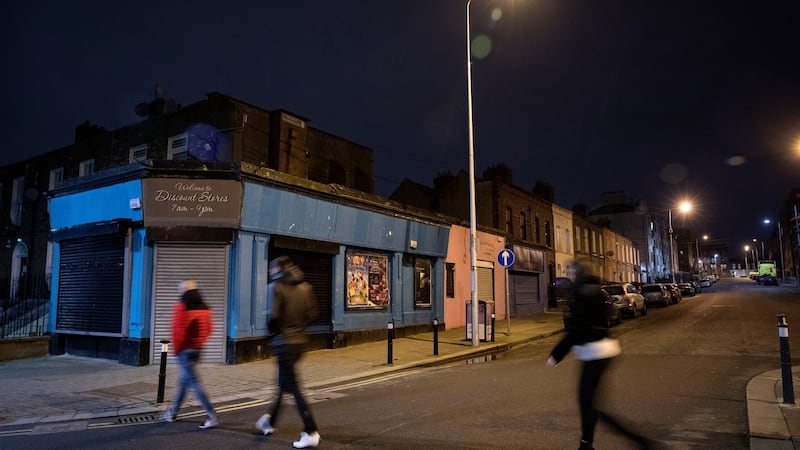
Quigley says people are living “in real fear”. “In the immediate term we need highly visible, community policing so people can feel safe.”
Following the February 5th meeting, the Taoiseach said the safety of the community in Dublin’s north inner city “is a priority for us all. People must not be afraid to leave their homes because of a small minority who are determined to cause harm to others”.
"An Garda Síochána has a comprehensive policing plan in place in Dublin's north inner city, which will see high-visibility patrols carried out on a daily basis, with a particular focus on the areas where public order and related offending has taken place in recent weeks," he added.
“There will be outreach and information programmes, run in a number of different languages, for all communities, as well as youth justice and other interventions.”
In the longer term, says Quigley, any strategy serious about addressing the drugs trade must provide an economic alternative to it, she says. Dating the area’s economic collapse back to the decline of the docks industries in the 1960s and 1970s, she says: “The area has just been left, without any strategy to replace that industry that gave people the dignity of an income.
Amazing work in youth services, drug programmes and other fantastic initiatives is critical. But it's not fair to the people doing that work that the broader picture is not being looked at seriously, to ensure things really change
“How is wealth generated and how is it shared? That discussion never, ever happens.”
She would like to see the establishment of a statutory agency for the area, along the lines of Údarás na Gaeltachta, which plans economic development in Gaeltacht areas.
“If you look at the docklands, billions are being invested in there – apartments, office blocks and just across the wall here you have a collapsed economy run on the drugs trade.”
She stresses the importance of the “amazing work, in youth services, drug services and programmes, and fantastic initiatives” across the area. “That work is critical. But it’s not fair to the people doing that work that the broader picture is not being looked at seriously, to ensure things really change.”
In a statement the Garda said: “Gardaí at Store Street are currently engaged in a number of ongoing operations combating criminal activity and anti-social behaviour in the northeast inner city.
“An Garda Síochána are fully engaged with the northeast inner city community, community representatives, agencies and stakeholders, who are working closely to address these and other issues.
“As part of these operations both overt and covert pro-active patrols are carried out by local Garda units on an ongoing basis.
“Local gardaí are committed to ‘keeping people safe’ and would urge people come forward with information and report all incidents.”




